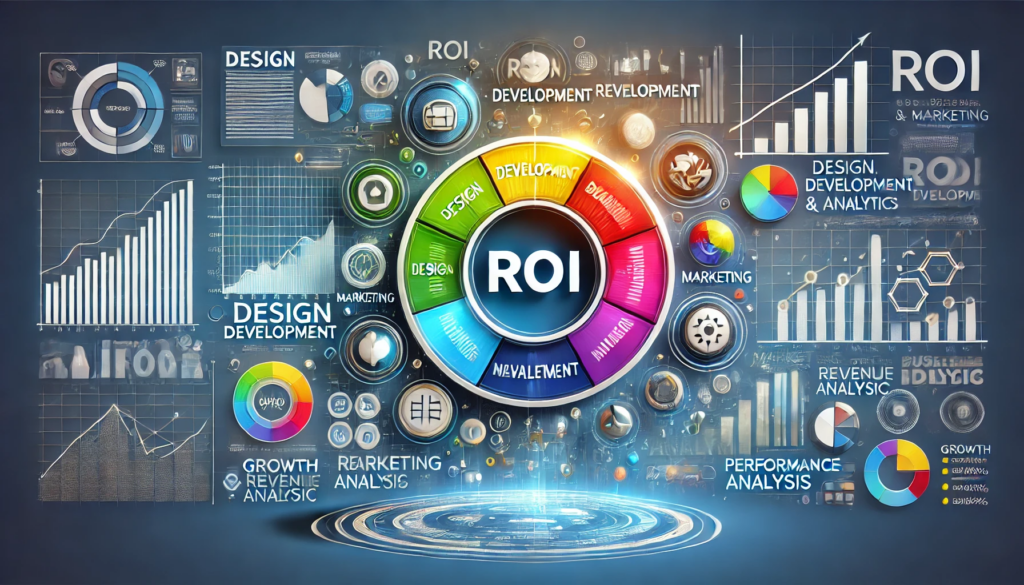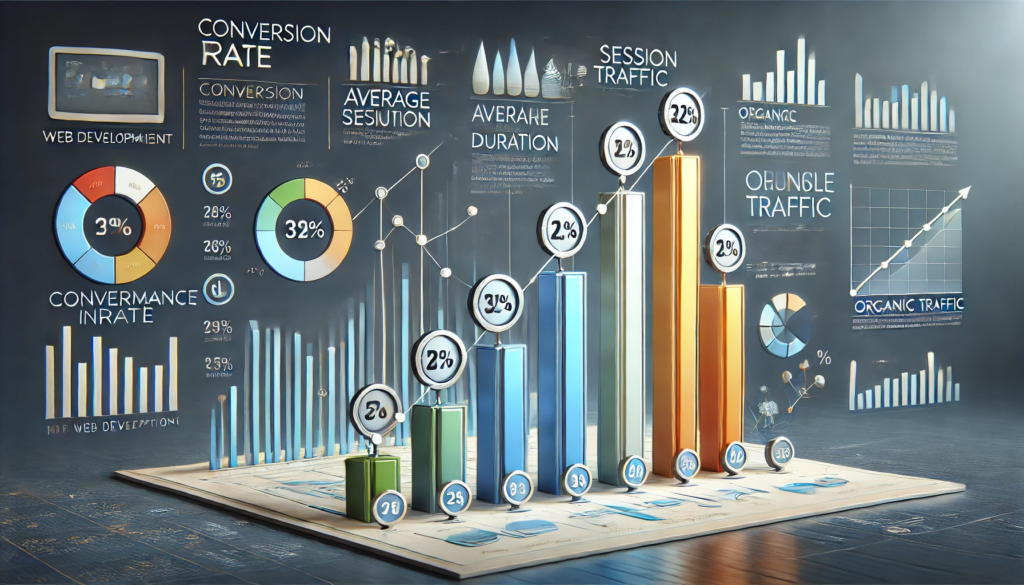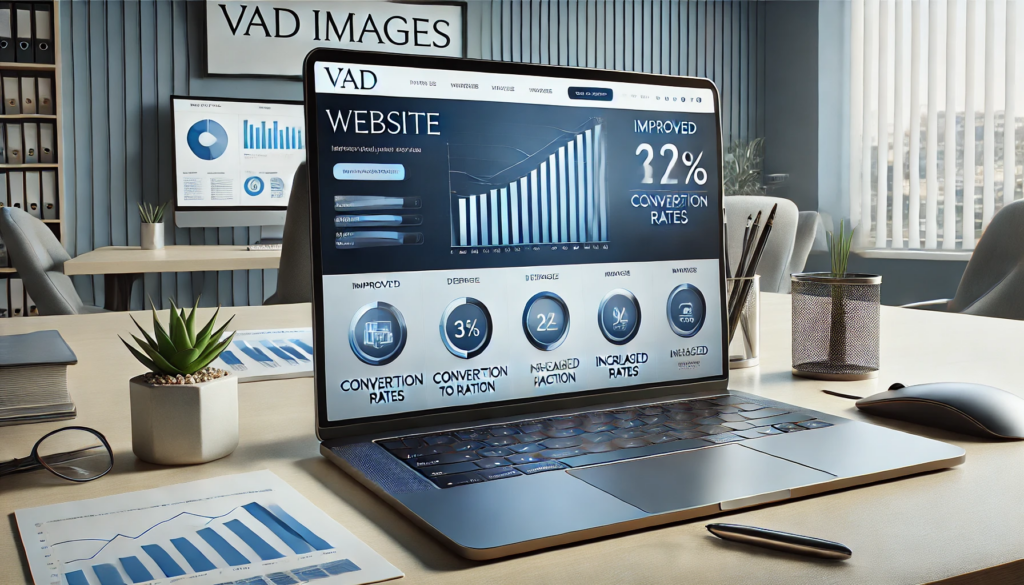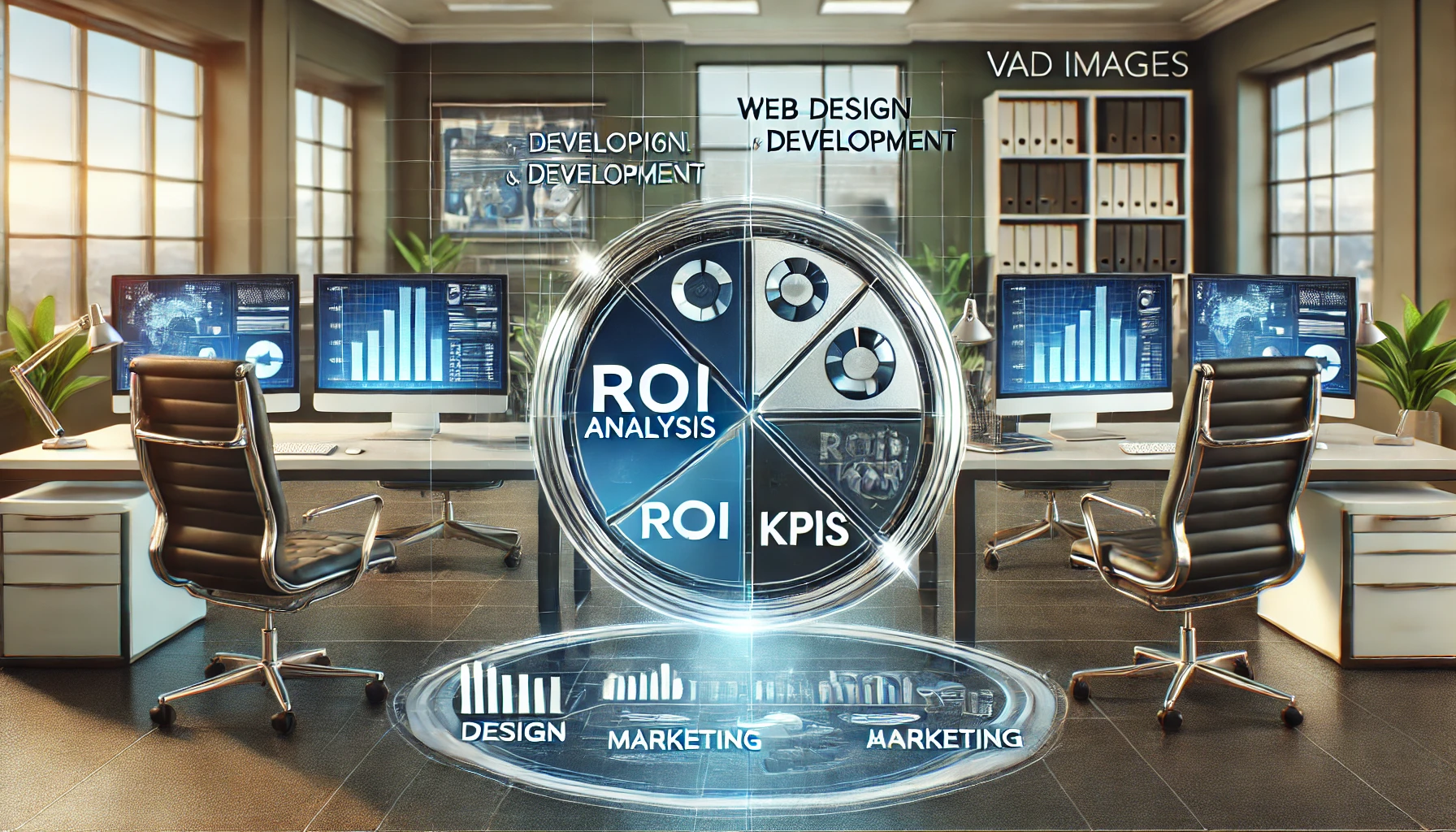Return on Investment stands as one of the most crucial factors determining the success of any business initiative, and your web presence is no exception. A well-designed and strategically developed website is an investment with the power to attract prospects, nurture leads, and generate sustainable revenue. Yet, understanding precisely how your website impacts your bottom line can be challenging without a clear system for measuring performance. This is where the concept of ROI becomes so valuable: by quantifying the gains you receive compared to the costs you incur, ROI offers direct insight into the efficiency and profitability of your web strategy.

Measuring ROI begins with recognizing that your website is far more than a digital calling card. It is a dynamic tool that communicates your brand’s values, engages potential customers, and streamlines conversions. When you treat your site as a carefully planned ecosystem of user experiences, calls to action, and sales funnels, you can track real, tangible outcomes. This shift from a static online presence to a high-performing digital asset is at the heart of why ROI matters.
No matter the size of your operation, focusing on ROI helps ensure that you make optimal use of your web development budget. Rather than merely hoping that your new website design will boost your reputation, you can track real indicators of success, then recalibrate your approach as needed. This data-driven mindset helps you avoid guesswork and encourages more effective spending, so you know that every step in your web journey contributes to measurable growth.
When you understand ROI’s role in web development, you also become more aware of the various channels that lead your audience to your online doorstep. Social media campaigns, email marketing strategies, and search engine results all play a part in generating traffic. Once on your site, visitors can be guided through your sales funnel and eventually converted into paying customers. By tracking how well each channel and marketing effort performs, you can more effectively allocate resources to the approaches that yield the greatest return.
One of the biggest barriers to effectively leveraging ROI is not having the right systems in place to gather and interpret data. A precise tracking structure not only reveals how many visitors you get, but how long they stay, which pages they read, whether they sign up for a newsletter, or ultimately become loyal customers. By harnessing this data and correlating it with financial outcomes, you can see where your investments bear fruit and where your strategy may need refinement.
In essence, ROI provides a dependable benchmark that clarifies whether your website is truly serving your business goals. Rather than operating purely on intuition, you can rely on facts and figures. The higher your ROI, the more successful your efforts have been in generating net gains for your brand.
Graphics Element Reference: Imagine a pie chart illustrating how web budget allocation is divided among design, development, marketing, and analytics. Each slice corresponds to a strategic investment area, with color-coded sections revealing how each contributes to overall ROI. This visual emphasizes the multifaceted nature of web development and how every piece must work together to produce meaningful returns.
Essential KPIs and Their Impact

Because ROI is all about measurable value, key performance indicators (KPIs) are your roadmap to understanding how a website performs. These metrics show, in quantifiable terms, what is happening on your site and how well it aligns with your business objectives. By evaluating these indicators, you develop a clearer picture of your site’s strengths and potential weaknesses. While there are many KPIs to consider, focusing on the ones that most directly relate to your brand’s goals is the surest route to success.
One of the core KPIs is conversion rate, which measures how many visitors complete a desired action, such as making a purchase, signing up for a service, or filling out a contact form. Conversion rate directly relates to revenue generation and thus ties closely to ROI. If you notice a discrepancy between total visitors and the number of conversions, that signals an opportunity to refine your landing pages or calls to action.
Another important KPI is average session duration, revealing how much time users spend on your website. Longer sessions typically indicate higher engagement, which means visitors find your content compelling enough to linger. This deeper level of engagement often leads to stronger brand loyalty, increased referrals, and a better chance of conversion. A low average session duration, on the other hand, points to areas in need of improved user experience or more relevant content.
Bounce rate is also pivotal. It measures the percentage of visitors who leave your site after viewing only one page. A high bounce rate might mean your website isn’t providing the content users expect, or it could be the result of slow loading times and poor design. Whatever the cause, investigating and reducing a high bounce rate is essential because visitors who depart immediately never get far enough into the customer journey to learn about your offerings or convert to paying clients.
Traffic sources matter as well. When you break down the origin of your visitors (organic search, direct visits, social media, or referral sites), you can see which channels are most effective at bringing in quality traffic. This helps you optimize your marketing strategies and allocate funds to the channels that drive better results. By distinguishing between paid and organic traffic, you can also refine ad campaigns, fine-tune keyword strategies, and amplify what is working best.
Lead generation is another KPI that aligns closely with ROI. Even if a visitor is not ready to purchase immediately, capturing leads through newsletter sign-ups, gated content, or free trials expands your contact list of potential future customers. The more effectively you transform casual visitors into leads, the more you open up opportunities for long-term business growth.
Behind every KPI lies an opportunity to ask “why.” If you notice that conversions go up when you publish certain types of content, you can infer that your audience finds particular offerings compelling. When average session duration spikes after a website redesign, you can conclude that improved navigation and aesthetics keep users more engaged. These insights help refine your approach so you can continuously improve your website, recalibrating content and design choices to better serve your visitors and your bottom line.
Graphics Element Reference: Visualize a simple vertical bar chart, with each bar representing a different KPI, such as Conversion Rate, Average Session Duration, Bounce Rate, and Organic Traffic. The height of each bar indicates current performance, and a reference line across the chart can mark your target metrics. This graphical depiction highlights gaps between current status and desired results, serving as a motivator to optimize.
Implementing Effective Tracking Strategies

Once you have identified which KPIs are most critical for your website, the next step is implementing the best tools and processes to gather actionable data. Without robust tracking strategies in place, you risk basing significant business decisions on incomplete or inaccurate information. By structuring your digital assets for comprehensive data collection, you empower your marketing and development teams to make informed choices that directly impact ROI.
One commonly used platform for web analytics is Google Analytics, a reliable tool that tracks visitor behavior and provides extensive reports. From page views to session durations, it offers in-depth information about how users navigate your site, which pages spark their interest, and where they decide to exit. Integrating analytics platforms requires proper tagging and coding, ensuring that every page captures the data you need.
For eCommerce websites, advanced tracking might include monitoring the customer’s journey from the product page through the checkout process. This gives you insight into which stages of the purchase process cause potential buyers to abandon their cart. By refining these friction points, you can dramatically boost completed sales. If your site focuses on lead generation rather than direct sales, then specialized forms of conversion tracking that record sign-ups or inquiries can be particularly helpful.
Heatmaps and session recordings are also powerful. Heatmap tools visually represent where users click, scroll, or hover their mouse. This reveals how visitors interact with your layout and which elements capture the most attention. Session recordings offer real-time replays of the user journey, showing how they navigate each page. By examining these patterns, you can identify usability issues that standard analytics might miss. You can then redesign elements to streamline the user path, thus increasing engagement and conversions.
A/B testing is another essential strategy. Rather than guessing which layout, headline, or color scheme produces better results, you can run two versions of the same page, dividing traffic between them. Over time, data reveals which version yields higher conversions or deeper engagement. This test-and-learn approach allows you to make incremental improvements that add up to significant ROI gains. By systematically testing everything from image placement to pricing strategies, you can create a site that resonates more powerfully with your target audience.
While tracking tools are critical, the way you interpret data can be the difference between floundering in a sea of metrics and discovering transformative insights. Dashboards that highlight your priority KPIs help you stay focused, while regular reporting sessions encourage teams to align on progress and adjust tactics. This culture of ongoing evaluation ensures your website remains agile and responsive to market changes, user preferences, and new technologies.
Perhaps the greatest advantage of effective tracking is the ability to adopt a proactive stance. If conversions start to slip, or if certain pages see an unexpected rise in bounce rates, your analytics will alert you. You can investigate issues quickly, implement solutions, and measure the results. This real-time feedback loop makes your website a living, evolving resource rather than a static entity.
Graphics Element Reference: Picture a schematic flowchart showing the progression from Data Collection to Analysis to Action. The first step, Data Collection, includes analytics tools like Google Analytics, heatmaps, and A/B testing. The second step, Analysis, involves interpreting results through dashboards and reports. The final step, Action, covers making design tweaks, revising content, or reallocating marketing budget. Each step connects in a continuous cycle, reflecting how data-driven insights feed back into ongoing improvements.
Choose VAD Images for Unmatched ROI

In your quest to unlock maximum ROI from your website, partnering with a highly skilled and experienced team can provide a decisive advantage. VAD Images specializes in crafting digital experiences that not only look impressive but also deliver measurable growth. When you work with VAD Images, you benefit from expertise that spans web design, development, branding, and analytics—all tailored to ensure that your website supports your business goals at every step.
At VAD Images, the emphasis is on building sites that operate as robust marketing tools. Rather than focusing solely on aesthetics, the team integrates seamless navigation, compelling calls to action, and data-driven design principles. Every project begins with a thorough understanding of your business model and target audience, so the final product resonates strongly with your ideal customers. This meticulous planning maximizes the likelihood of high conversions, repeat visits, and meaningful engagement.
But VAD Images goes beyond design. The studio incorporates advanced tracking solutions into every project, equipping you with the analytics frameworks you need to monitor user behavior, measure conversions, and refine your marketing strategies. By aligning each design decision with metrics that matter, VAD Images transforms your website into an engine for generating leads and sales. Rather than leaving your success up to chance, you receive clear data that validates every improvement and expansion.
In a competitive digital landscape, a powerful website is the cornerstone of your online presence. It can serve as the central hub for all your marketing channels—social media, email campaigns, influencer partnerships, and more—by funneling interested prospects into your carefully designed user journey. VAD Images helps you maintain this hub with ongoing support and optimization. Through continuous monitoring of performance metrics, the team can identify new opportunities to enhance user experience and boost ROI.
Perhaps the most compelling advantage of entrusting your web development to VAD Images is the peace of mind that comes from working with an all-in-one digital partner. From conceptualizing your site’s architecture to ensuring its long-term success through analytics and refinements, every phase is handled with care and expertise. You can count on a customer-centric approach that values transparent communication, timely project delivery, and a commitment to tangible results.
Graphics Element Reference: Imagine a sleek brand-centric mockup displaying one of VAD Images’ custom-designed websites. The homepage features strategic calls to action, streamlined menus, and eye-catching visuals that illustrate the brand’s value proposition. Accompanying metrics appear beside this mockup, such as an impressive conversion rate and above-average session duration, symbolizing the real-world impact of professional web development.
If you’re prepared to take the next step toward a more impactful, data-driven online presence, VAD Images stands ready to help. By leveraging advanced design methods, analytics integration, and a results-oriented methodology, we enable your website to truly become the digital extension of your business ambitions. Whether your priority is boosting revenue, expanding brand awareness, or forging stronger customer relationships, VAD Images offers the insights and expertise you need to achieve your goals.
A carefully constructed, well-monitored website can play a transformative role in your business journey, delivering an outstanding ROI and positioning you at the forefront of your industry. Embrace the potential of strategic design coupled with powerful analytics, and watch as your online platform evolves into a key driver of profitability. With the right KPIs in focus and the right team behind you, your web investment will become a force multiplier, fueling growth, customer loyalty, and long-term success. VAD Images will be there to guide you every step of the way.

